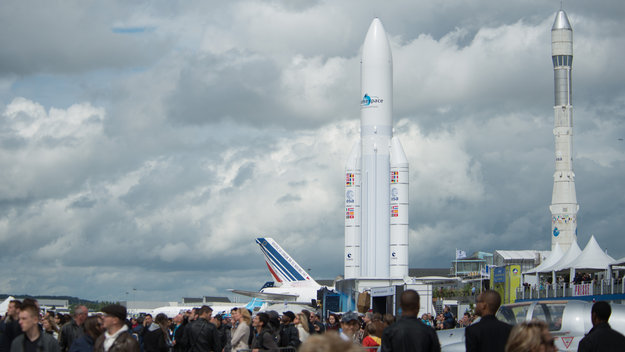NASA has selected more than 170 educational organizations nationwide to receive Summer of Innovation mini-awards of as much as $2,500 each.
Wednesday, June 26, 2013
Innovative Partnerships Expand NASA's Summer Education Reach
NASA has selected more than 170 educational organizations nationwide to receive Summer of Innovation mini-awards of as much as $2,500 each.
July Space Station Spacewalks to be Previewed and Broadcast on NASA TV
Two
Expedition 36 astronauts will venture outside the International Space
Station twice in July on spacewalks to prepare for a new Russian module
and perform additional installations on the station's backbone.
Launch of NASA's New Solar Mission Rescheduled to June 27
The
launch of NASA's Interface Region Imaging Spectrograph (IRIS) mission
is being delayed one day to 7:27 p.m. PDT (10:27 p.m. EDT) Thursday,
June 27, from Vandenberg Air Force Base in California. Live NASA
Television launch coverage begins at 6 p.m. PDT.
NASA Thruster Achieves World-Record 5+ Years of Operation
A
NASA advanced ion propulsion engine has successfully operated for more
than 48,000 hours, or 5 and a half years, making it the longest test
duration of any type of space propulsion system demonstration project
ever.
NASA Selects Student Teams For Microgravity Research Flights
NASA
has selected 14 undergraduate student teams from minority serving
institutions across the United States to test science experiments under
microgravity conditions.
IRIS Launch Set For Thursday
Technicians
and engineers at Vandenberg Air Force Base in California mate the
Pegasus XL rocket with the Interface Region Imaging Spectrograph, or
IRIS, solar observatory to the Orbital Sciences L-1011 carrier aircraft.
The launch of NASA's IRIS mission has been delayed one day to 10:27
p.m. EDT on Thursday, June 27.
Live NASA Television launch coverage begins at 9 p.m. IRIS will open a new window of discovery by tracing the flow of energy and plasma through the chromospheres and transition region into the sun's corona using spectrometry and imaging. The IRIS mission will observe how solar material moves, gathers energy and heats up as it travels through a largely unexplored region of the solar atmosphere.
The interface region, located between the sun's visible surface and upper atmosphere, is where most of the sun's ultraviolet emission is generated. These emissions impact the near-Earth space environment and Earth's climate.
Image Credit: NASA/Randy Beaudoin
Live NASA Television launch coverage begins at 9 p.m. IRIS will open a new window of discovery by tracing the flow of energy and plasma through the chromospheres and transition region into the sun's corona using spectrometry and imaging. The IRIS mission will observe how solar material moves, gathers energy and heats up as it travels through a largely unexplored region of the solar atmosphere.
The interface region, located between the sun's visible surface and upper atmosphere, is where most of the sun's ultraviolet emission is generated. These emissions impact the near-Earth space environment and Earth's climate.
Image Credit: NASA/Randy Beaudoin
Earth’s northern biomass mapped and measured
ESA and student teams kick-off Fly Your Satellite!

Six student teams and their supervisors have gathered at ESTEC for the kick-off of the new Fly Your Satellite! Programme under the ESA Education Office. For the next three days, ESA experts will introduce the objectives and present the activities to be performed during the first phase of the programme.
Earthrise
Apollo 8, the first manned mission to the moon, entered lunar orbit on Christmas Eve, Dec. 24, 1968. That evening, the astronauts--Commander Frank Borman, Command Module Pilot Jim Lovell, and Lunar Module Pilot William Anders--held a live broadcast from lunar orbit, in which they showed pictures of the Earth and moon as seen from their spacecraft. Said Lovell, "The vast loneliness is awe-inspiring and it makes you realize just what you have back there on Earth."
They ended the broadcast with the crew taking turns reading from the book of Genesis.
Image Credit: NASA
Ames Hosts Media for Rescheduled IRIS Launch
The launch of NASA's Interface Region Imaging Spectrograph (IRIS) mission has been delayed to 7:27 p.m. PDT, June 27, 2013.
Subscribe to:
Posts (Atom)










